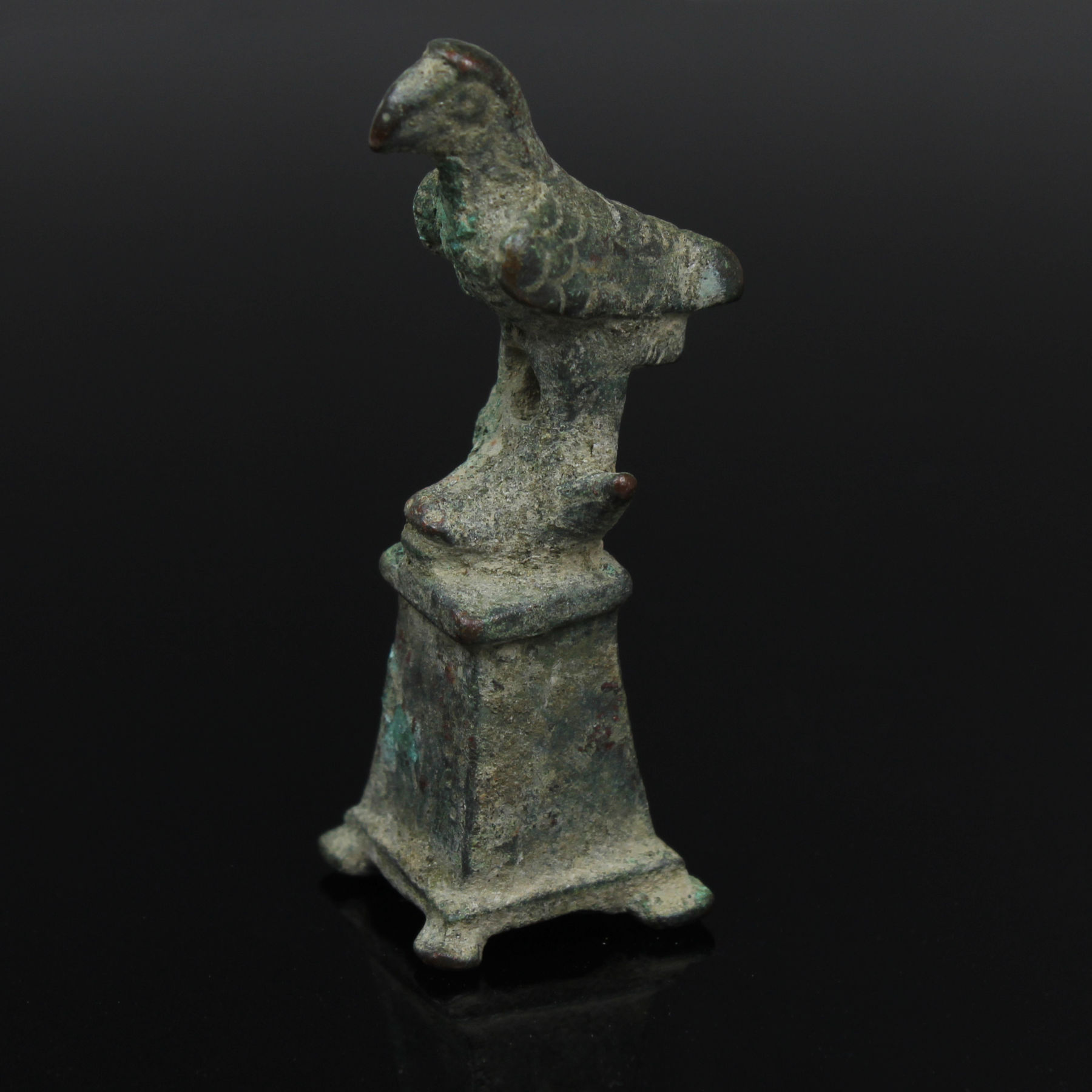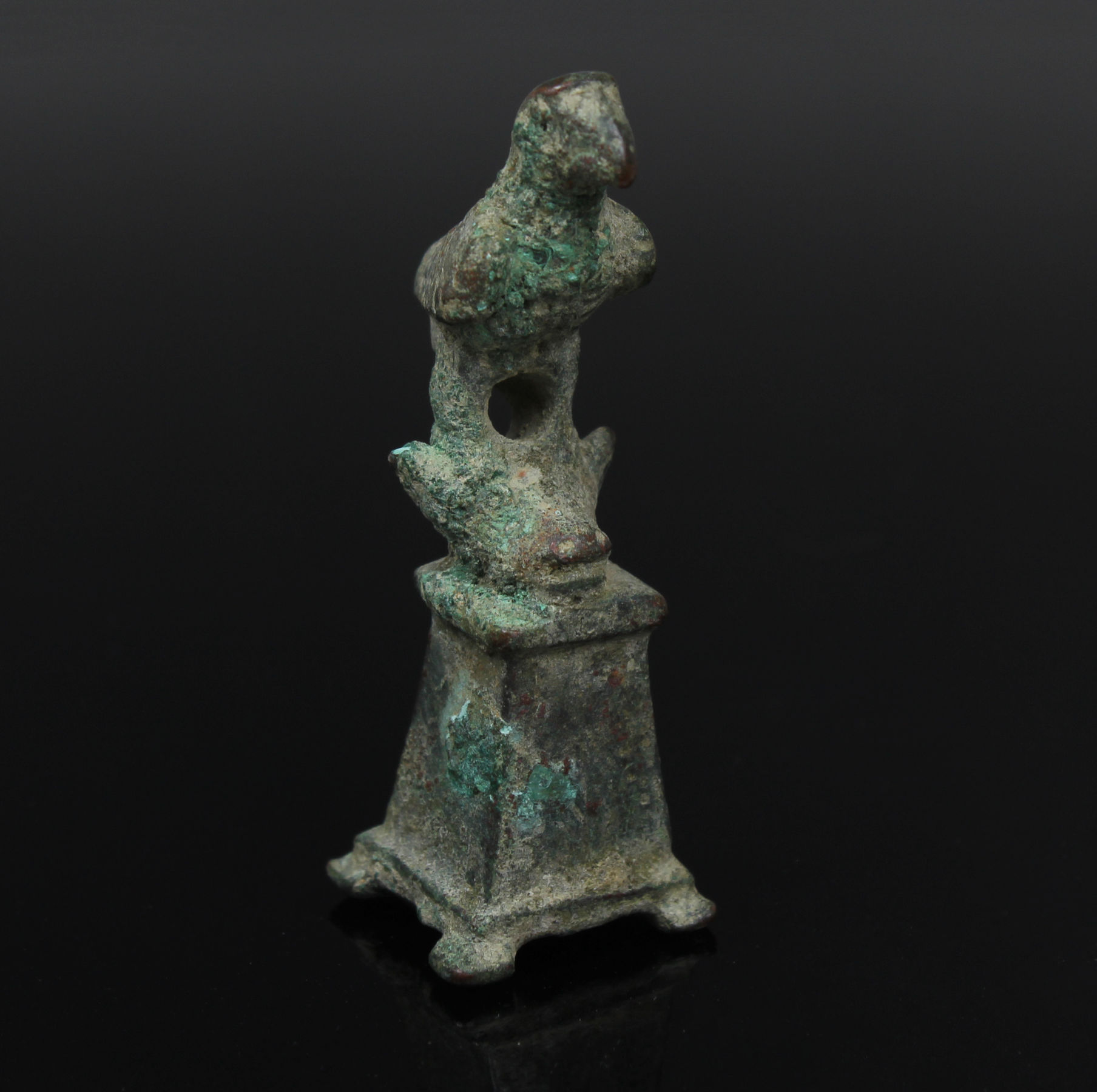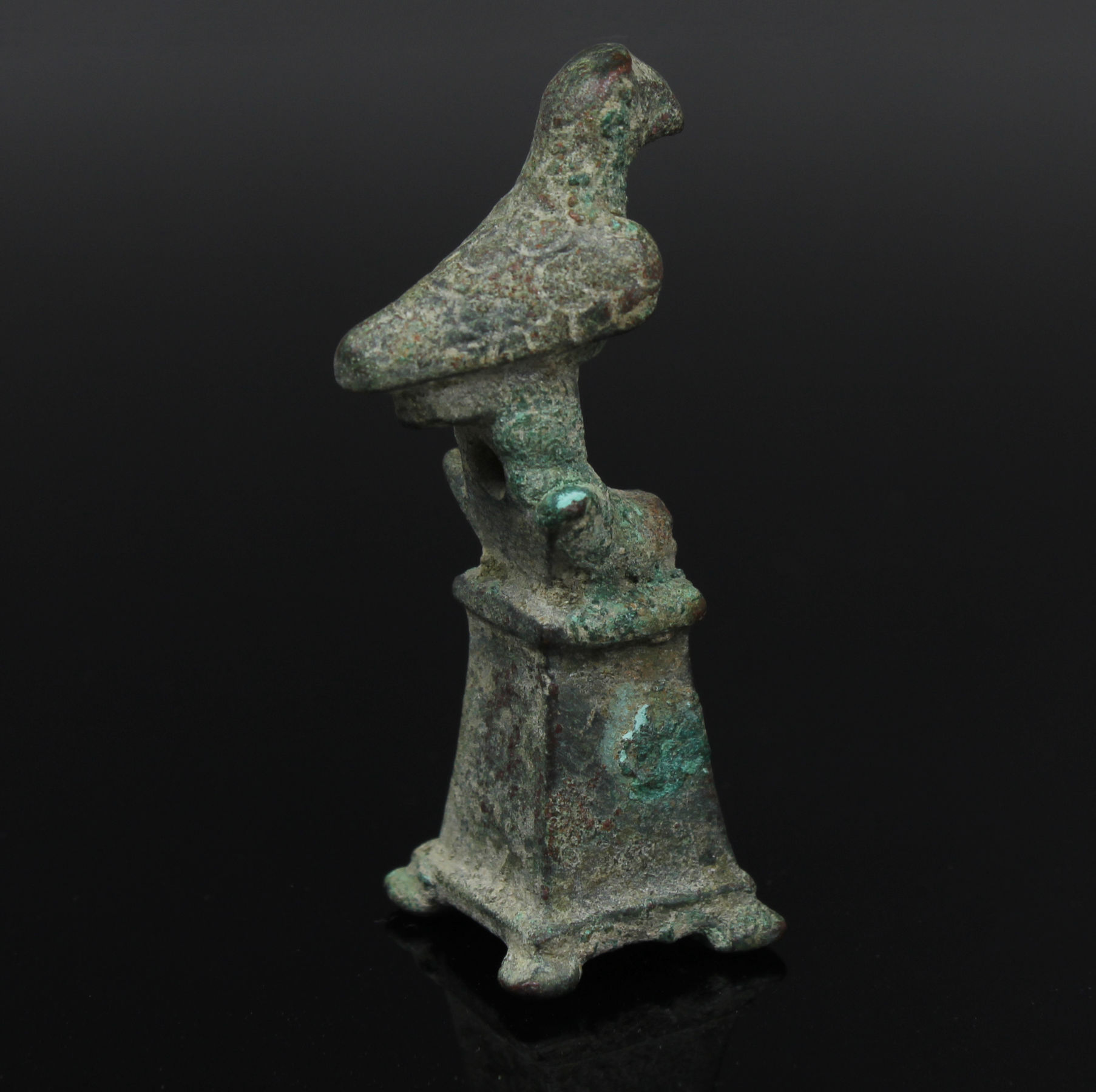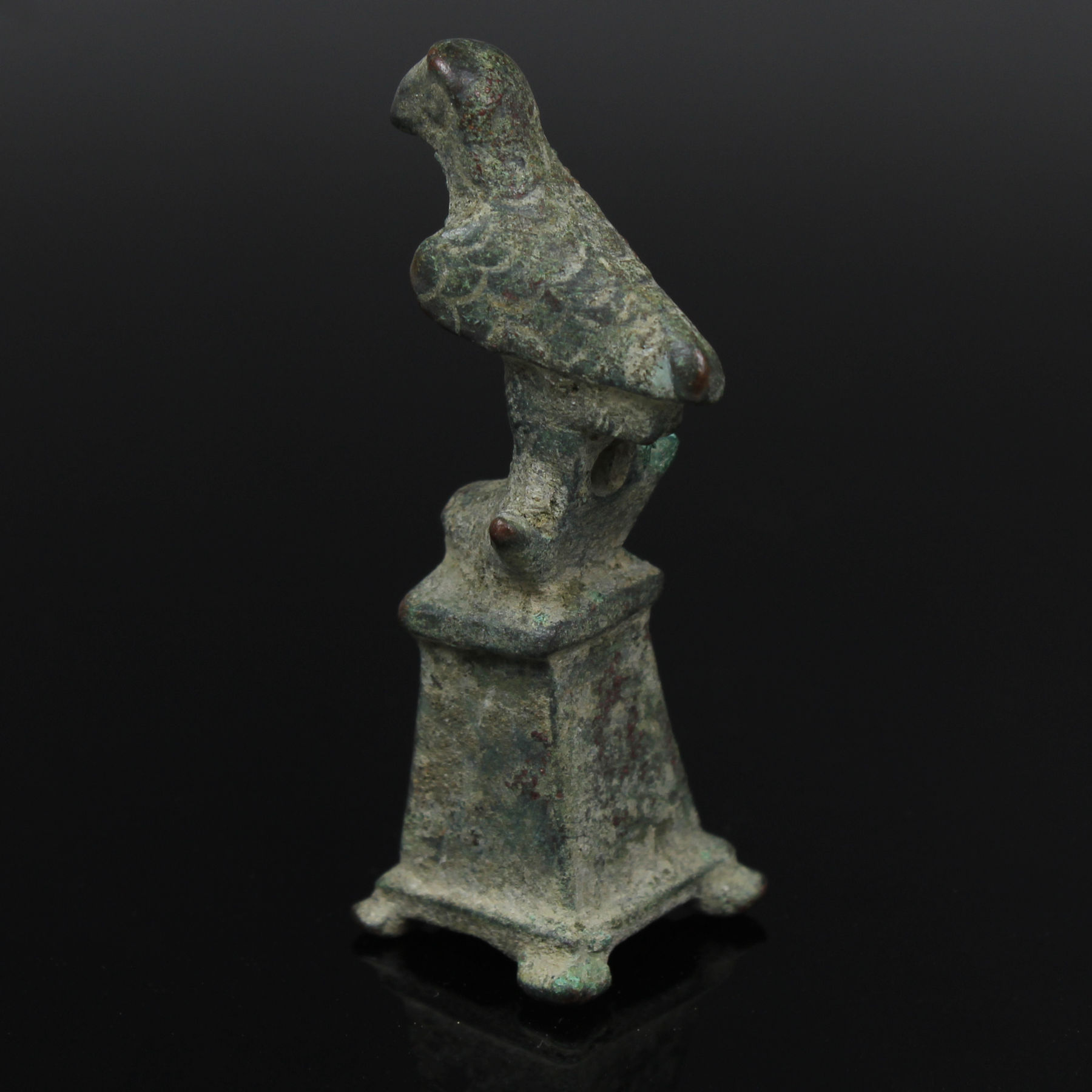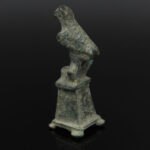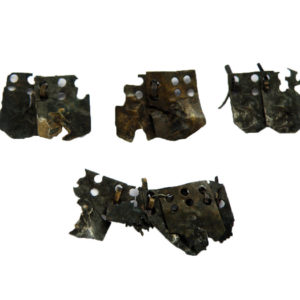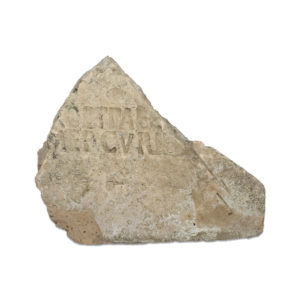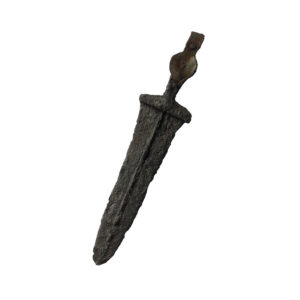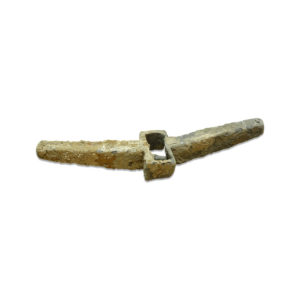Description
| ITEM | Statuette of an eagle on pedestal |
| MATERIAL | Bronze |
| CULTURE | Roman |
| PERIOD | 1st – 3rd Century A.D |
| DIMENSIONS | 60 mm x 20 mm x 20 mm |
| CONDITION | Good condition |
| PROVENANCE | Ex German private collection, acquired before 1980s |
In the Roman period, bronze statuettes of eagles held significant cultural and symbolic importance. The eagle was a powerful and revered symbol in Roman society, representing strength, courage, and military prowess. As the national emblem of Rome, the eagle was associated with the Roman legions and the divine authority of the Roman state. Consequently, bronze statuettes of eagles were commonly used as military standards, known as “aquilae,” carried by Roman legions as symbols of honor and allegiance to the empire.
These bronze eagle statuettes were meticulously crafted, showcasing the artistic skill and attention to detail characteristic of Roman artistry. Typically small in size, these statuettes featured finely rendered feathers, outstretched wings, and sharp talons, capturing the majestic and imposing nature of the bird of prey. The craftsmanship of these statuettes reflected the Romans’ appreciation for realism and their ability to infuse lifelike qualities into their art.
Beyond their military significance, bronze eagle statuettes also found a place in various aspects of Roman life, including as decorative elements in homes, public spaces, and temples. The eagle’s association with Jupiter, the king of the gods in Roman mythology, further elevated its status as a symbol of divine protection and authority.


